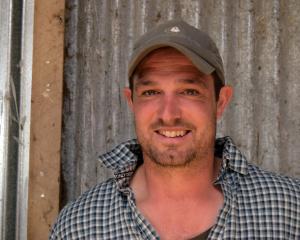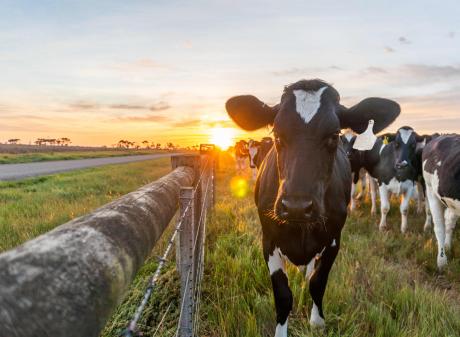On-farm costs in New Zealand have levelled out over the past six months, Infometrics data shows. However, on-farm costs at the start of 2024 were still 24% higher on average than at the start of 2021. The costs to rise include insurance premiums, interest rates, fuel, electricity and maintenance work. Costs to fall include livestock purchases, fertiliser and seed. Shawn McAvinue asks farmers and growers in the South:
1. If they have made any changes to their system to combat rising costs in recent years?
2. If the levelling out of on-farm costs was providing any optimism for their sector?
Simon Wright, Deer farmer, of Garston ... 1. Yes, by developing less and being conservative on any expense, getting products as cheaply as we can, to use the most efficient way.
2. I’m always optimistic. We are going through a tough patch where it is reasonably difficult to balance the books but it is swings and roundabouts and I’m confident it will jump out of the cycle and we will be away.
Sheep and beef farmer Lindon Sanders, of Little Valley ... 1. Yeah, I normally spray 200ha of weeds and only did 100ha this year.
2. No, not really because the price of everything went up and levels out and remains high and our product price is down.
Blake Korteweg, Dairy farmer, of Hedgehope ... 1. We have taken a finer tooth comb to our budget and follow them a lot closer. We are pricing everything we need on farm now so we get the best bang for our buck.
2. Yeah it is. The stability and the costs not being so volatile makes it easier to budget. Companies selling stuff are aware of how tough farmers are doing it and they are trying to help where they can, whether it is financing at lower rates or being sharper with their pricing, they are trying to do their part, which has worked quite well for everyone.
Seed grower Craig Whiteside, of Waiwera South ... 1. We have adopted technology to start doing variable rate nutrients and that is saving us a lot. We have managed to reduce our fertiliser use by 20%. There is capital outlay but payback is within one year. We are looking at a lighter touch, using chemicals only when necessary, where we had a blanket approach in the past.
2. It is still quite challenging. The commodity price for grain and small seed have reduced significantly and our margins are tighter than ever. The arable sector usually runs 12 months behind the other sectors so the rubber is hitting the road now for a lot of people. It is tight and it is tough. We are in it for the long game. Dairy still looks positive and it has a massive influence on the arable sector in the lower part of the South Island.
Peter Armstrong, Commercial vegetable grower, of Totara ... 1. There’s not a lot you can do when you’re growing because you’ve still got to put in all your inputs, otherwise you’re not going to grow anything so you ride it out. You’ve still got to do it right and carry on doing it until things come right and we’ll be away again.
2. Vege prices are as low as they’ve been for years so it is hard to be too positive but things will improve at some stage and we are in it for the long term and you get through and you go again because we live in hope the next crop is the good one and we are going to make our fortune.
Fruit grower Chris Toms, of Coal Creek ... 1. You can’t afford to cut costs because you’ve got to put fertiliser on and use your sprayers. Once you start cutting costs, your product becomes poorer quality. Insurance cost has gone well up. I’ve made all my excesses a lot higher to try and get a cheaper rate and it still works out $2000 more than last year.
2. Orchardists are eternal optimists.
Stafford Ferguson, Dairy farmer, of Crichton ... 1. No. You’ve still got to put fertiliser on and you’re at the mercy of the banks for interest rates and insurance you can’t really do without it. We are managing our costs and doing the best we can and we are fortunate enough to be in a position to be able to still put fertiliser on. We are making sure we are talking to our neighbours and making sure everyone is OK and caring for each other, sharing the load and seeing what is working. In any difficult time, you have to look after yourself and your family because you can get through.
2. Yup. We are in a dry area so my biggest concern is if we will get the rain to do the production to spread the cost per kg of milksolid. Your costs come back if you can do good production. We have had four dry years so I’m an optimist, hoping we will have a rainy summer and grow grass, that would be helpful. Farming is not the golden goose it once was but I’m always optimistic it is going to come good again.
Sheep and beef farmer Andrew Paterson, of Omakau ... 1. Yes. We have not insured some things and we have put down the values of the insured items to try and counter the costs. We have got our insurance broker to negotiate hard on our behalf. To reduce shearing costs, we contacted our shearing contractor to talk to them about ways to reduce the cost and what things we can make easier for the shearing contractor when he comes to the shed to keep the cost down. We did quite a bit of stuff. We looked closely at our budget multiple times and cut out quite a few things. After an employee left, we decided to leave that position vacant. We are being careful on any extra expenses. We traded in all of our old tractors and bought new ones to reduce our maintenance cost. The cost of maintaining old machinery was more than the cost of ownership of a new machine with a warranty. We have analysed it closely, we have to, otherwise we are not going to survive.
2. No, because the biggest cost that is hurting the majority of farmers, especially the younger farmers who are buying their way into farms and have high debt loading, is interest rates, which is killing any optimism at the moment. As soon as we have a lift in lamb, mutton and wool prices and a lowering of interest rates, you’ll see some optimism then but that is potentially going to be countered with a rise in costs on farm. Any businesses which have held their costs in order to try and help the farmers, will then essentially add them on so it could be eaten up. That’s the pessimist in me.























